-
Evidence based studies – Xtend Foot
As user experience is number one priority for us, we have in collaboration with external clinical experts and universities collected data and performed studies to carefully monitor if Xtend Foot performance lives up to the high expectations of usability that we demand. Here are the summaries of two studies focusing on exactly that.
Study of Patient Experience of Xtend Foot
- effect of walking function in amputees with Xtend Foot compared to regular foot prostheses.
The purpose of the study was to compare the walking ability in amputees supplied with Xtend Foot vs. regular carbon fiber foot prostheses.
Tests were made for 6 minute walk, Time Up and Go (TUG) and PROM (Plus-M)
This study was performed with three trans-tibial and three trans-femoral amputated patients. Patient walked with both the Xtend Foot as well with their current foot prostheses (in this case the following feet; Variflex Evi Össur, Aeris Performance, Triton IC60, Element Fillauer, Triton LP, PSA-flexvacum)
Results
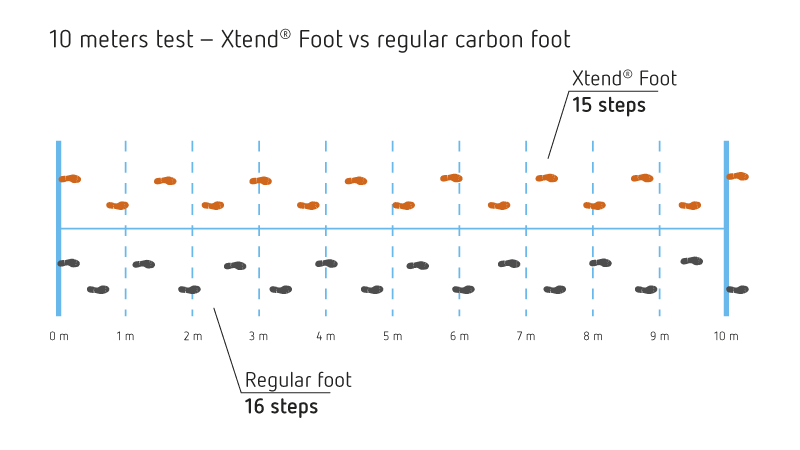
10 meters test
The trial users used fewer steps when walking 10 meters with Xtend Foot than with their regular foot prostheses.
6 minute walk test
The trial users could walk a longer walking distance in 6 minutes with the Xtend Foot than with their regular foot prostheses.
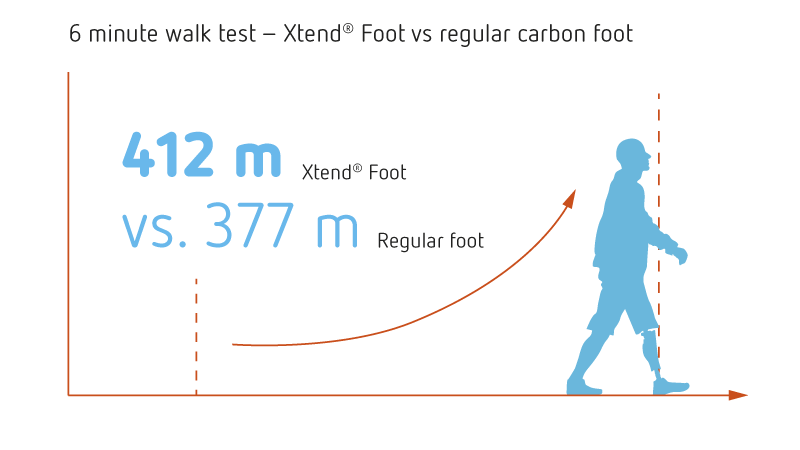
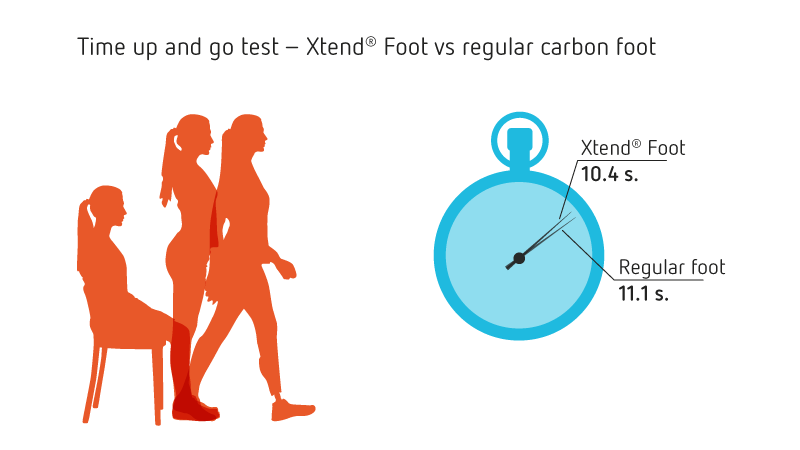
Time Up and Go test
The trial user had a faster speed from sitting down to getting up walking (TUG: Time Up and Go) with the Xtend Foot than with their regular foot prostheses.
Some patient comments from the study:
“Possible to walk faster and with more energy”
“Better balance, movement and joint load”
“Softer and smoother”
Take home message
The benefits experienced when walking with the Xtend Foot will most probably improve the activity of day-to-day life.
Read the full publication: ISPO Kobe Paper 2019
Questions about the study? Contact Malin Östlund COO, Lindhe Xtend
Study of Comfort & Performance of Xtend Foot
- a long term study
The purpose of the study was to evaluate the comfort and performance of the Xtend Foot under a longer period of time and with different types of users.
The users were recruited based on different types of indications, both in age and types of amputation level.
The users were in weight class P4, i.e. 61 to 80 kilograms. The users included in the study were from both Norway and Sweden.
Each patient signed a testing-contract but received no gratification.
Results
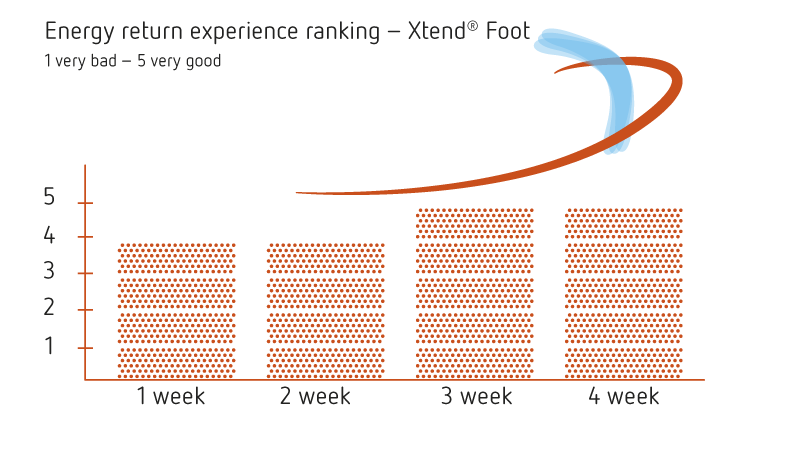
Energy return during walking
The energy-return was highly ranked and the rating increased as the users were getting more and more confident with the Xtend Foot.
Evaluation of the experienced feeling in the residual limb
An improvement in the limb-connection point was also experienced by the user and it was a clear improvement after two weeks as the patient got used to walking with the Xtend Foot
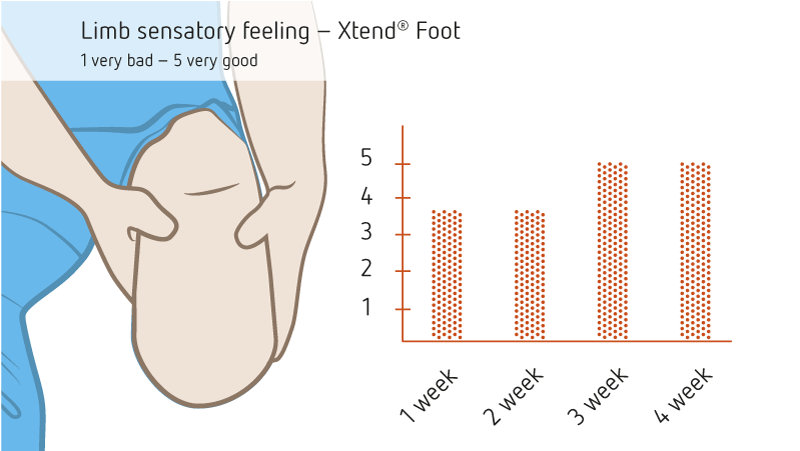
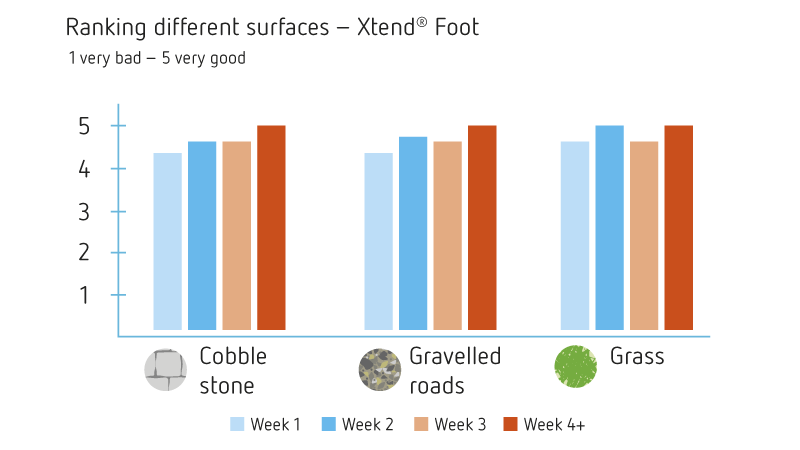
Ranking different surfaces
The ranking shows clear progression and good results on uneven grounds where a higher flexibility in the prosthetic foot is required.
Conclusions
The results confirms positive results of the clinical evaluation study and validates that the Xtend Foot provides a more flexible foot and is suitable for walking on uneven surfaces, especially outdoors. The result seems consistent throughout the test period.
The conclusion is that the Xtend Foot performs as it was designed to, especially in regards to flexibility and walking on uneven surfaces.
Questions about the study? Contact Malin Östlind COO at Lindhe Xtend

